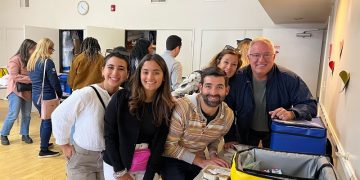There is little doubt about the historical veracity of one statement in the text of a recently vetoed California law that would have required at least some signatures for ballot initiatives to be gathered by volunteers instead of paid workers:
“The voters amended the California Constitution to reserve for themselves the power of the initiative because financially powerful interests, including railroad companies, exercised a corrupting influence over state politics.”
In fact, the initiative process did work that way for quite awhile. The best example might have been the so-called Clean Environment Initiative of 1972, a measure that lost – but whose goals have almost all been achieved: a moratorium on new nuclear power plants in California, taking lead out of gasoline and many more provisions now taken for granted.
That initiative, organized by the populist People’s Lobby group headed by the legendary (among initiative aficionados) Ed and Joyce Koupal, is considered the start of the modern initiative era because it opened up shopping malls to petition carriers.
That came after San Bernardino County sheriff’s deputies kicked volunteers out of a mall, and a lawsuit ensued, upholding their right to be there.
Soon after, then-Gov. Ronald Reagan ironically invited the Koupals to meet with him and explain the initiative process. Their meeting bore strong irony because Koupal once led a drive to recall Reagan. But Reagan listened, and soon qualified a tax-cutting initiative for a special election ballot in 1973. That one also lost, but its goal was realized five years later via the Proposition 13 property tax limits.
Reagan’s ballot drive was the first to use significant numbers of paid petition carriers, with corporations, labor unions and big money interests of all types realizing they also could play the initiative game.
Within just a few years, tobacco companies, oil companies, electronics companies, labor unions and many other types of organizations had small armies of petition carriers pushing many different types of causes.
At first, paid carriers got about 25 cents per signature; more recently, some have been paid upwards of $5 per valid name. Initiative petition drives now often cost millions of dollars. It’s become a political truism that anyone with the money to run a petition campaign can qualify just about anything for the ballot, with virtually no need for popular ideas that can draw volunteers.
So much for the original purpose of taking power away from “financially powerful interests.”
Enter the vetoed bill, which passed the Legislature as AB 857. It demanded that least 10 percent of petition signatures be gathered by unpaid workers. That would have been a start toward ensuring that all future ballot measures enjoy at least a modicum of popular support before going to the voters.
The problem Gov. Jerry Brown zeroed in on when vetoing it: labor union members working for an initiative would have been classified as volunteers. That, he felt, gave unions too much of an advantage over other interests.
Some Republicans contended the definition would give a lasting advantage to labor. But there was also nothing to prevent groups on the right from sending their own members out to gather significant numbers of signatures. You can be sure the various Tea Party organizations would have taken heed.
The bill summed up its goal this way: “Improving the measure of public support for a proposed initiative will increase the public confidence and protect the integrity of the initiative process…this is more consistent with the intent of the voters in reserving (to themselves) the power of the initiative.”
This would not have been a panacea for ballot measures. Big money could still have had plenty of influence in the process. The need now is for sponsoring Assemblyman Paul Fong, a Concord Democrat, and others not to give up, but to make their definition of who is a volunteer a bit more pure. Then this needed improvement will probably pass muster with Brown and make a start toward returning initiatives to the populist purpose for which they were always intended.













